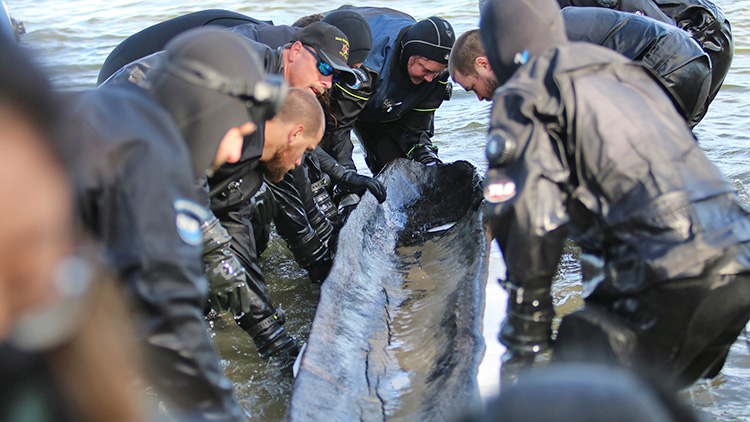
Imagine that you are an archaeologist scuba diving for fun. Something on the bottom catches your eye. It’s a canoe sitting on the bottom of a lake! That’s what happened to Tamara Thomsen, an archaeologist who was diving in Lake Mendota in June 2021. The canoe was stuck in mud 27 feet underwater.
Before pulling the canoe to the surface, archaeologists took a small sliver of wood from it to test its age. Thomsen thought that the canoe was likely built by Boy Scouts in the 1950s and sank to the bottom.
But experts determined that the canoe came from about 1200 years ago. Archaeologists planned to pull the canoe out of the lake so that they could study it. Usually, archaeological finds are much smaller—broken things or things that people have thrown away. It’s rare to find something as large as a whole canoe.
The canoe had been buried for years in the sediment [dirt at the bottom of the lake], but the water had exposed it. Now that it was exposed, the archeologists had to work quickly. Algae, moving water, and organisms could get into the wood and make the canoe disintegrate.
Divers took mud out of the canoe and slipped a sling underneath it. They attached inflatable bags to the sling and pumped them full of air. The canoe raised to the water’s surface. Then crews slowly towed the canoe to shore, carefully placed it on a truck, and sent it to a place where it would be preserved. The canoe will sit in special chemicals for two years to make sure it doesn’t fall apart.
The discovery of the canoe will allow researchers to find out more about how the Native American groups around the lake traveled back and forth and how they fished. The canoe was filled with tools that archeologists will study.
What Do You Think? What do you think archaeologists can learn from discovering the old canoe? What makes this discovery so special?
Photo Credit: Dean Witter/Wisconsin Historical Society



